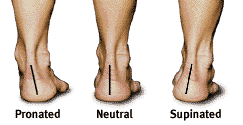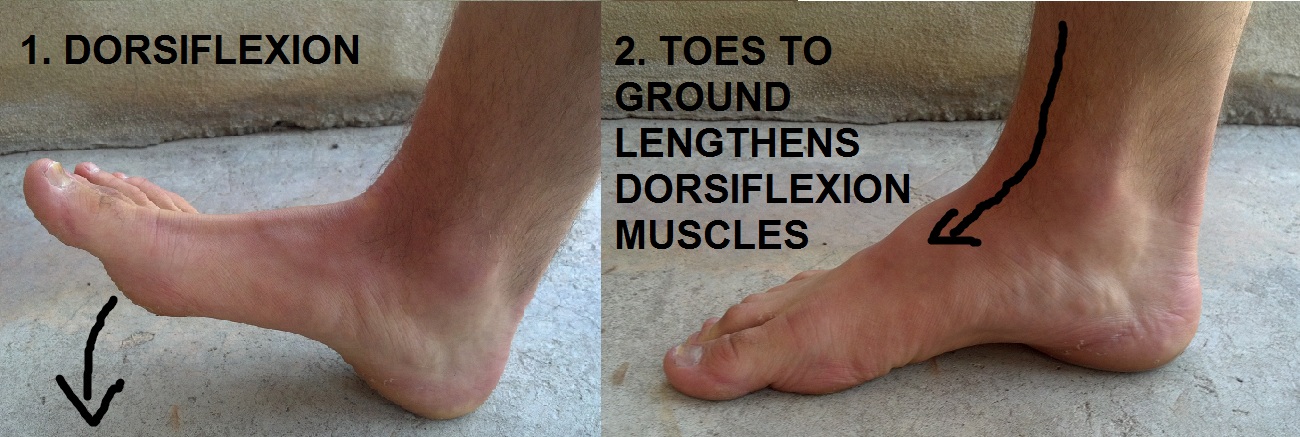Most trainees will benefit from some type of conditioning in their program once or twice a week. It’ll prevent them from becoming too unadapted to things they might need or want to do. That could include playing rec sports, chasing a dog, going on a hike, or running away from zombies and/or nuclear fallout.
Some trainees forgo conditioning because they hate it, are bulking, or are doing a linear progression. Then they’ll jump back into conditioning as if the layoff never occurred. This can easily result in irritated joints, strains, or muscle pulls, especially in “older” trainees. One common irritation is the shin splint.
Generic sources say that shin splints are caused by doing too much and give equally generic rehab advice. This post will teach you what mechanical issues lead to shin splints, how to avoid them, and how to treat them.
Causes of Shin Splints
“Doing too much” is a gross over generalization. Yes, subjecting your structures to stresses that they aren’t adapted to will have negative repercussions. In all of my books I’ve pointed out how new activities, especially conditioning stuff, needs to be easily progressed. If you haven’t been running, don’t sprint. If you haven’t been walking, don’t run. It’s pretty simple, but the “Tommy Tough Guy” mentality is prevalent. It’s better to ease into activity than inhibit training because of a stupid strain.
The same goes for “easing into more volume or intensity in a program”, especially with movements that you aren’t adapted to. I pointed this out in the “Transitioning to Olympic Weightlifting” post, yet I still know a lot of people who ignored the advice, had a high frequency of doing the Olympic lifts, and had elbow or shoulder irritations as a result. For example, don’t jump into a lot of running mileage to prepare for your PT test; ramp it up over several weeks.
Mechanics
Shin splints specifically arise from having poor mechanics, and this inefficiency is only exacerbated by ‘doing too much too soon’. To understand poor mechanics, you must understand foot anatomy. In Anatomy Without A Scalpel, Dr. Kilgore points out how Isaac Newton said, “The human foot is a masterpiece of engineering and a work of art.” It’s perfectly constructed — through natural selective evolution — to carry out it’s function of bipedal ambulation (i.e. two legged walking).
 In the “Foot Awareness” post, I talk about how “navicular drop” (AKA flat feet that are probably habitually rotated out) has an effect on squatting, yet it also creates an inefficient loading on the foot and lower leg during movement. Running and hiking/rucking are activities where trainees usually see problems. Navicular drop is typically called “pronation of the ankle”. By looking at the picture (right), you can see that having a severe angle between the foot and shin would be problematic to efficient force distribution.
In the “Foot Awareness” post, I talk about how “navicular drop” (AKA flat feet that are probably habitually rotated out) has an effect on squatting, yet it also creates an inefficient loading on the foot and lower leg during movement. Running and hiking/rucking are activities where trainees usually see problems. Navicular drop is typically called “pronation of the ankle”. By looking at the picture (right), you can see that having a severe angle between the foot and shin would be problematic to efficient force distribution.
Even if the ankle is a healthy “neutral”, there still can be some mechanical issues. Dorsiflexion is when the toes are pulled up towards the knee. Plantarflexion is when the toes are pointed away, as if you are pushing down a gas pedal (see these and more in this beardless “Anatomy Motion Explained” video).
When running (with poor technique) or rucking, heel striking occurs with the ankle in dorsiflexion and the foot out in front of the center of mass. When the body shifts forward to be over the foot, the ankle plantarflexes, yet the dorsiflexion muscles on the front of the shin resist the motion (if they didn’t resist, then your foot would just flop to the ground uncontrollably). Said another way, the dorsiflexion muscles are eccentrically acting — the fibers are being elongated under a load. Eccentric muscle action is the most stressful, damaging kind and makes the muscle very sore.
Imagine doing several thousands of repetitions of a movement that eccentrically acts on the front of the shin. Now imagine that there is a significant additional force. Running slow applies three to four times the force of body weight (the fore foot phase can be between four and seven times body weight) whereas rucking is going to apply a force that is a multiple of the sum of body weight and the weight being carried. Now imagine being unadapted to this type of force in one instance of exposure. Now imagine being exposed to this several times a day, every day, until there’s a problem. It’s easy to see how people will develop shin problems, huh? I know a fella who was medically dropped from phase one of BUD/S (Navy SEALs’ selection and training) because he had severe shin splints…twice. They run six miles a every day just to go to the chow hall (one mile to and from), then whatever else they do that day. Yikes.

Ignore the “tibialis posterior” — that’s on the back of the leg and not labeled well. This ankle is pronated pretty bad.
Let’s specifically look at the musculoskeletal anatomy involved. The muscles that dorsiflex are the tibialis anterior and the muscles that extend (or pull “up”) all five of the toes (note that the big toe, the hallucis, has it’s own muscle that is separate from the other digits). This collection of muscles originate along the tibia (the bigger shin bone on the medial side), the fibula (the smaller shin bone on the lateral side), and the interosseus membrane (a fibrous tissue that fills the space between the tibia and fibula). The tibialis anterior is easy to see and palpate; simply dorsiflex your ankle and look at the muscle that bulges up a few inches below your knee.
Imagine those muscles attaching along the shin bones and the fibrous tissue in between them. The “heel strike followed by resisting the toes to the ground” eccentric movement is repeatedly yanking on those origin attachments. If you repeatedly yanked on a rope tied to a wall, eventually something is going to give, whether it’s the wall or the rope. The same thing happens with the muscles, except with repetitive stress the attachment sites are what get irritated. In this case, the interosseous membrane and the tendon/bone sites are stressed repeatedly and continued exposure prevents them from repairing the damage. Compounding harmful stress without recovery results in achy pain, and can continue to be extremely painful when more significant structural damage occurs. Without time to recover, the yanking tension will actually create little fractures on the shin called “stress fractures”. Worst case scenario it can get more damaged, reduce circulation, and cause anterior compartment syndrome where tissues die. And that, my friends, is the pain you call “shin splints”.
Note that this area can get sore from a single exposure, especially when the trainee isn’t adapted to it. Merely one exposure won’t be enough to cause long-term problems, but it can interfere with training if it’s really sore. Overt pain can alter mechanics since the body instinctually tries to avoid pain (e.g. limping is something that pulls weight off a sore joint). Also, sore and damaged muscles won’t be able to exert force as well as fresh, healthy muscles.
The above explanation focusing on dorsiflexion is the simple version, because when you add in the likelihood of the ankle being pronated, the arch being collapsed, and the toes pointed out, it will only make all of this worse. Especially with heel striking. Heel striking shoots the force right through the structures, and when the structures are out of alignment because of poor foot mechanics, it isn’t distributed up the leg and dispersed through the thighs and hips; it’s sent right into the foot and shin. Cleaning up foot and ankle mechanics can reduce the chance of injury.
Treatment
The best way to treat shin splints is to prevent them to begin with. Work to correct foot mechanics (“Foot Awareness“) and use exercises to help re-develop the arch and lower leg muscles (“Foot Drills“). Progress into new activity that would put a lot of pounding on the lower legs. If you know that stressful activity is imminent ahead of time, start a train-up program to prepare yourself (i.e. pepper your angus).
As for treating shin splints, you’ll have two likely scenarios: a) you did something stupid once and are sore or b) repetitive stress was applied. With the former, you should cease or reduce the activity that caused it, massage the area (including trigger point work), and ice. If you’re already sore, then the window for effective icing might be past, but it’s not really going to be harmful. If this is a “repetitive stress” issue, then also cease or reduce the activity significantly, and massage the hell out of the area. Focus on the muscle bellies all the way up and down the shin and dig into them with at least ten purposeful strokes with a hard object. Follow it up with the foot drills (links above) and ice after. This process could occur several times a day, every day. Feel free to use any ankle rehab exercises, especially ones that work dorsiflexion. Do ankle circles as much as you can, especially before activity.
Shin splints are usually an indication that you were unprepared. Now that you know how they are caused, prepare thyself. If you want or need to do a lot of running, learn the POSE/Chi/forefoot running technique (progress that slowly, too). If you want or need to do a lot of hiking/rucking, then introduce it several months before you hit the longer or heavier stuff. You can mitigate the problems from shin splints by strengthening your feet and lower leg muscles with the above drills. If you’re in a situation where you cannot help the activity, (BUD/S, Ranger School, multi-day backpacking, etc.), then massage the muscles whenever you’re off your feet and do your best. Remember: the best treatment is prevention.
Edit: For more on shin splints, read this post.






